Friday, March 23, 2012
 It was the end of summer 2011 when I wrote my first post about having just a “big salad” for dinner, and I revisited the issue with a few of my favorite recipes in a recent post here. In the spirit of the first day of spring, today’s post provides a bit more detail on the “why” and “how” to bring this concept alive in your own diet. I’m often encouraging making a big salad a regular part of your dinner repertoire and provide specific suggestions how to do that in this post. But if that just sounds like crazy talk talk to you, then at the very least think about incorporating a side salad somewhere in your diet to get you started. By including ingredients you love and a ravishing salad dressing, you just might learn to love it. And you may even see a positive change in your health and weight over time.
It was the end of summer 2011 when I wrote my first post about having just a “big salad” for dinner, and I revisited the issue with a few of my favorite recipes in a recent post here. In the spirit of the first day of spring, today’s post provides a bit more detail on the “why” and “how” to bring this concept alive in your own diet. I’m often encouraging making a big salad a regular part of your dinner repertoire and provide specific suggestions how to do that in this post. But if that just sounds like crazy talk talk to you, then at the very least think about incorporating a side salad somewhere in your diet to get you started. By including ingredients you love and a ravishing salad dressing, you just might learn to love it. And you may even see a positive change in your health and weight over time.
Salad Base: Greens, Your Way
Aside from chopped salads like this one here and here, I generally begin my dinner salads with a base of greens. First, I love them. Second, greens are quite low in calories so you can really pile them on your plate and their fiber and water content will help you to feel satiated. Third, they’re loaded in vitamins, minerals, and phytonutrients. There is life beyond iceberg lettuce, too, which, while crunchy, lacks much of the flavor and nutrients of other greens. (The white/light green color tips you off.) There are so many fabulous lettuces out there, why not give some new ones a shot? Romaine is a good starter if you’re accustomed to iceberg, but there’s also spinach, arugula, mesclun mix, red leaf… What’s in season? What works for you? Mix ’em up, use ’em alone, and make it your own. You can also go cruciferous if you prefer, whether pretty purple cabbage or hearty kale. (One of my favorite salads last year was kale with smoked salmon and beets. Truly rocked my salad world.)
Top With Veggies: The More Colorful, The Better
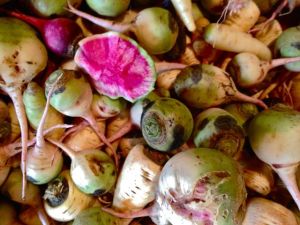
I am obsessed with watermelon radishes. Click on the pic to learn more about radishes, a great salad ingredient. (Leaves too!)
You’ve got your base, now paint your palette of salad greens with whatever veggies your little heart desires! My regular dinner salads comprise whatever I have in my fridge and on my countertop. Carrots, radishes, celery, avocado, tomatoes, beets, sprouts, olives, artichokes, cauliflower—whatever. Pretty much all of my salads are topped with onion, usually red (purple), which livens things up and adds complexity. Hate onions? Leave ’em off! Things become more interesting when you find fun veggies like watermelon radishes and purple carrots, still present at the Cambridge farmers’ market, or sun gold cherry tomatoes in the summer (which I pop into my mouth like M&M’s). The devil may be in the dietary details but selecting brightly colored veggies is an easy strategy to guide healthful choices: the more varied the veggies and brilliantly hued the colors, the more nutrients you’re getting.
Boosting Flavor and Nutrition: Salad Additions
Not convinced your greens and other veggies are enough for dinner? Well, it depends just how much of all that stuff you add, and this is before dressing. Veggies may be low in calories but they still add up, right? That said, my dinner salads often bring in other elements to boost the energy content and overall nutritional profile. And taste, of course. Here are a few suggestions:
- Beans and legumes: garbanzos (chick peas), soy, black, red, white…
- Nuts: almonds, walnuts, pecans… (Toasting brings out the flavor.)
- Seeds: sunflower, roasted pumpkin or squash…
- Whole grains: brown rice, quinoa, pasta…
- Tofu: plain or seasoned (Watch the sodium content.)
- Fish: canned tuna or salmon, shrimp, or a nice piece of fish…
- Fruit: citrus, berries, apples… (Depends on the salad, I think.)
- Herbs: parsley, cilantro, basil…
- Cheese: cheddar, goat, blue, parmigiana… (Not all the time!)
- Croutons: whole grain, of course (Homemade are super easy!)
- Other proteins: Eggs or other animal products… (See note below.)
Click here for a round-up of “big salad” recipes that feature some of the above ingredients, or check out my recipes page for more inspiration.
Regarding “other proteins” (chicken, steak, bacon, what have you): While I don’t eat such things, I am a realist. If cutting them out completely isn’t in the cards for you, why not consider throwing them on top of a salad? Or perhaps take smaller portions of protein and add a side salad to your meal? One of the things nutrition science has shown for decades is the richer your diet is in plant foods, the better your health. Any step you can take in this direction is the right choice for you, as well as the environment. (It takes fewer environmental resources like land, water, and grain to produce plants than animals.)
On Salads: A Quick Cautionary Tale
Salads are great, especially when they’re supplanting less healthy and/or energy-dense foods in your diet. Truth be told, I actually have a “big salad” for dinner 2-3 times per week, for lots of reasons: I love it, I feel great, and it’s a relatively quick dinner (i.e., I don’t have time to cook every day). If you’re still not buying it (then why are you still reading?), let’s return to the concept of incorporating a side salad with dinner or lunch. That said, remember you can’t just ADD a salad to every meal without subtracting something else to stay in energy balance. Otherwise, you’re just piling on extra calories to your diet, even if they’re coming from healthy foods. In an old sitcom where the gang was all on diets, Frasier said it best: “But how did I GAIN weight? I added a salad to every meal!”
Salad Inspiration and Encouragement
Here’s some additional salad inspiration, courtesy of a former student of mine. (Again, you can click here for a round-up of “big salad” recipes, or check out my recipes page for more ideas.)

See? I’m not the only one eating a “big salad” for a meal, and Tom is getting his veggies on between ski runs, no less! The salad looks a bit like mine did last night, come to think of it. Well, minus the stunning view of the Rocky mountains. And the beer. But I’m talking about salad here, people. Focus!
—
This post was updated on 20 March 2014 for the first day of spring.

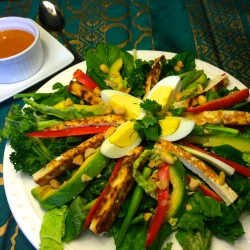
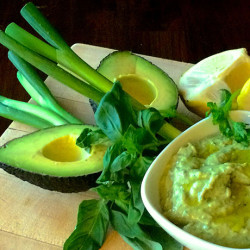
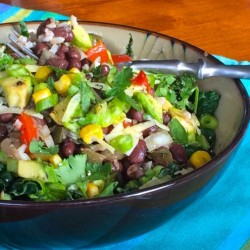
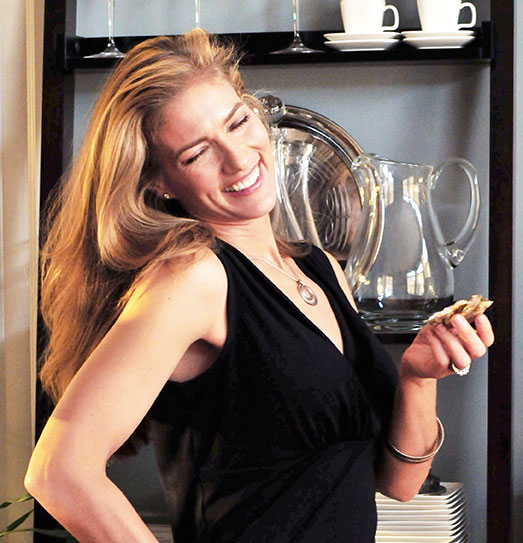
This post made me crave salad and also made me think about why I think of salad as a lunch option and not a dinner option. With recent hot and humid weather in SC, a non-cooked dinner sounds just delightful, and we’re all about the legumes and greens in this household. I’ll have to pick up some yummy ingredients at the farmer’s market tomorrow and try this healthy dinner strategy out!
Give it a shot & let me know how it goes. Especially when you add other stuff, it’s definitely a satisfying meal! Thanks for the comment, Cat! 🙂
I’m going to make myself a salad right now! I have been meaning to incorporate more into my meal planning
Awesome!! 🙂 Let me know how it goes. The key? Use what you have, and what you like! Thanks for the comment, Jodi!
Reblogged this on Inspiredweightloss.
Thanks for the reblog!!
You are welcome P.K.
Huge fan of the salad. It’s a great way to finish off some of the left overs in your fridge, too! LOL …liitle bit of this…little bit of that…voila! Great post! 🙂
Definitely! Thanks for the comment, Terri. Glad you liked the post. 🙂
Some of the first early salad greens of the season have been popping up here at the organic market in Budapest. It was a long winter, filled with many different meal incarnations of carrots, potatoes, parsnip, and roots, and your post made me look forward to mixing things up with a colorful, all-local salad as the growing season gets kick-started here in Hungary. If you would like to learn more about local food networks in Budapest, check out http://www.localfoodlogi.wordpress.com
Super! Fortunately, we have a winter farmers’ market here in Boston and Cambridge, so I’ve gotten fabulous farm market fare from there, including wonderful green house lettuces – check out my other posts under farmers’ markets from more of these posts, there are lots of them – as well as winter veggies and roots, like you. I’m making butternut squash soup as we speak, actually! :). But I, too, am looking forward to the new season! Thanks so much for writing. I’ll look forward to checking out your blog to learn more about local food in Budapest!
Is your butternut squash recipe on your site? I just picked up some squash this weekend at the market and would like to give the soup a go!
Just made the video…look out for it later this week!!
Yum salads. Now that Spring is slowly coming to the Rockies, I can have salad for lunch again! It’s my favorite thing to have in the summer. I had mixed greens with salsa and green beans the other day and carrot salad with tuna today yum
Very yummy indeed! Yours sound great!